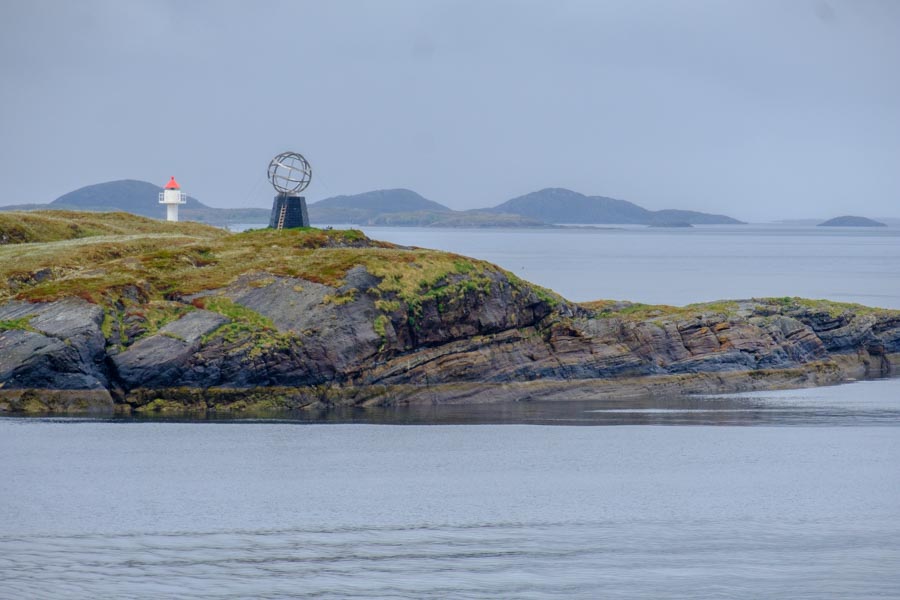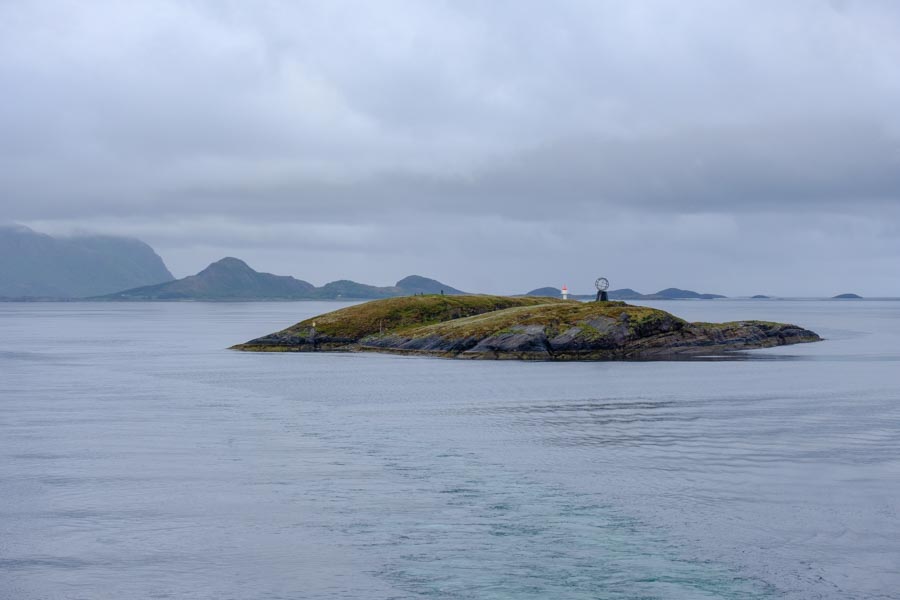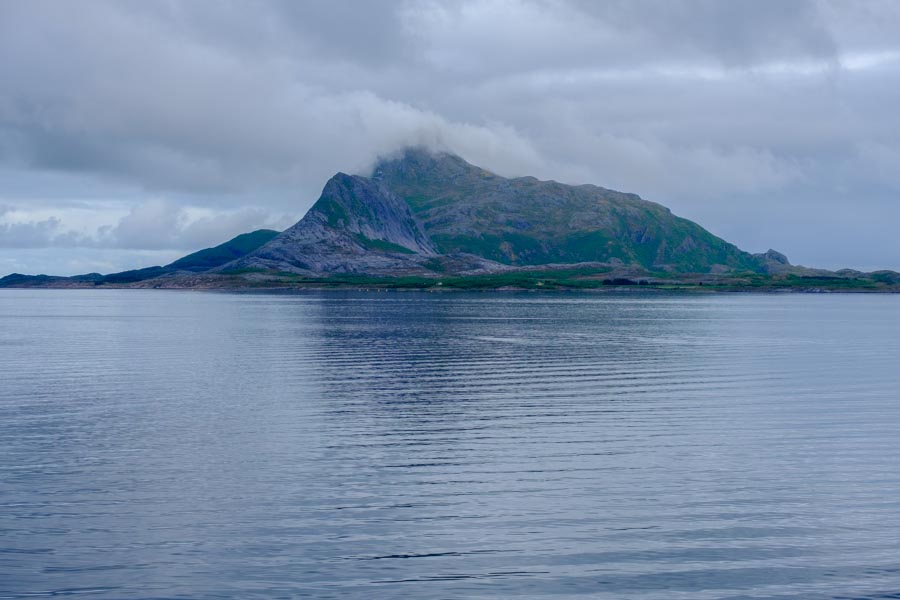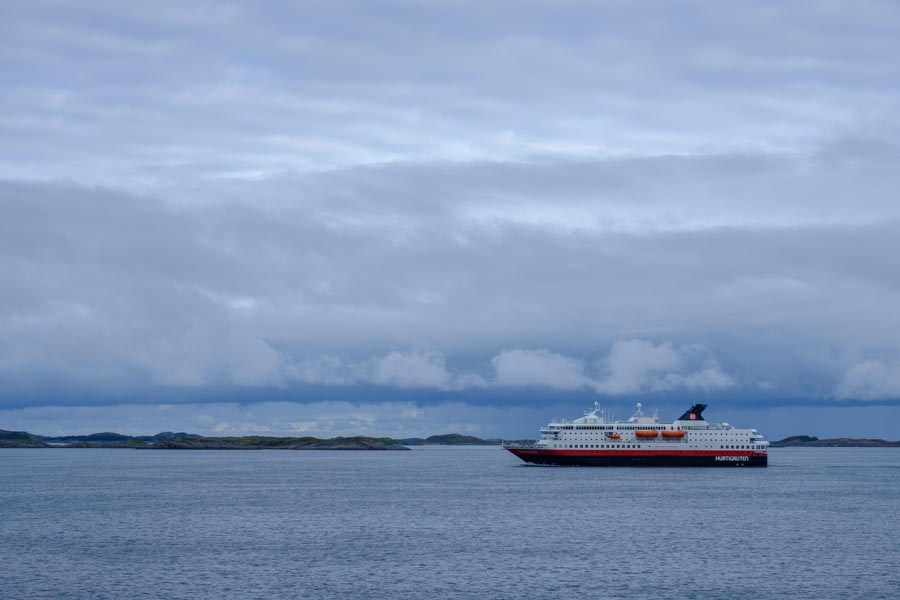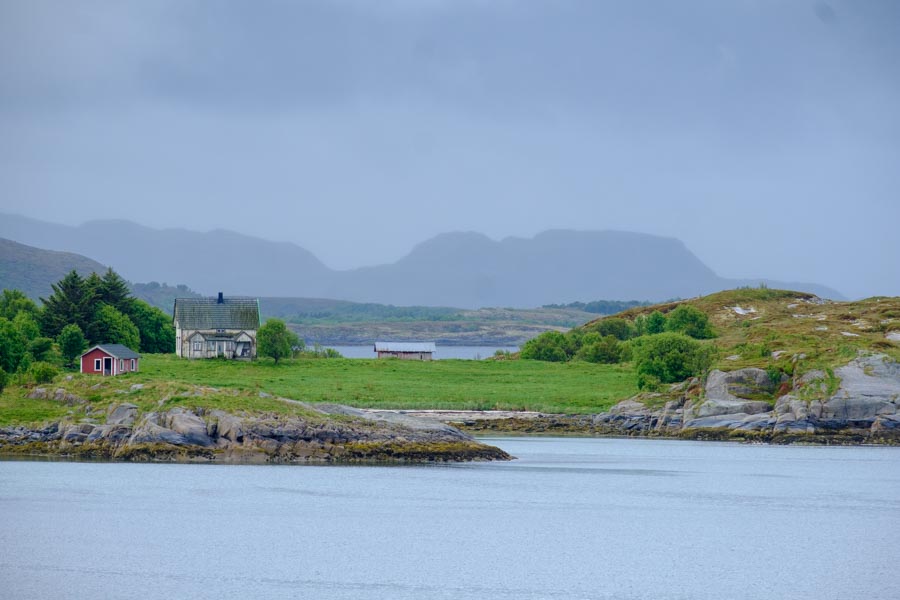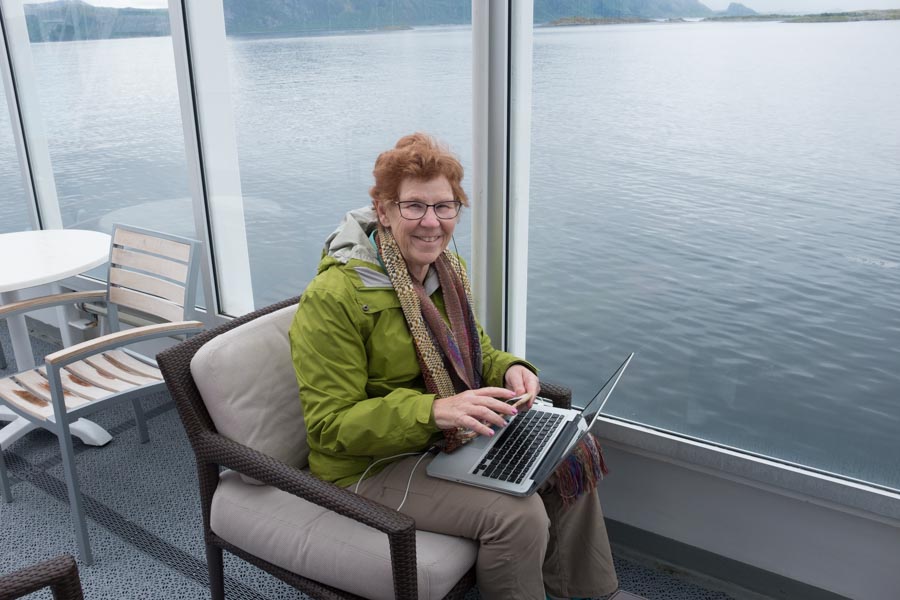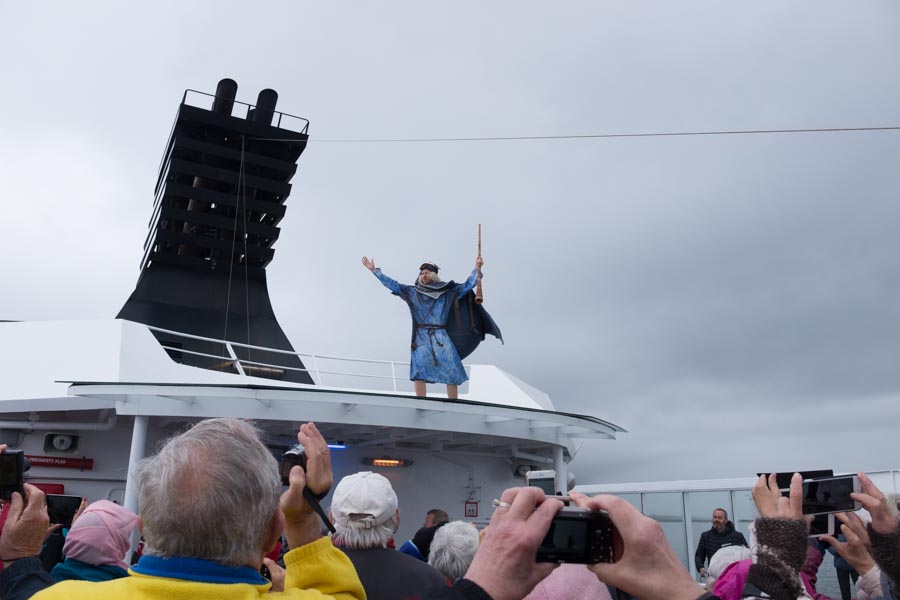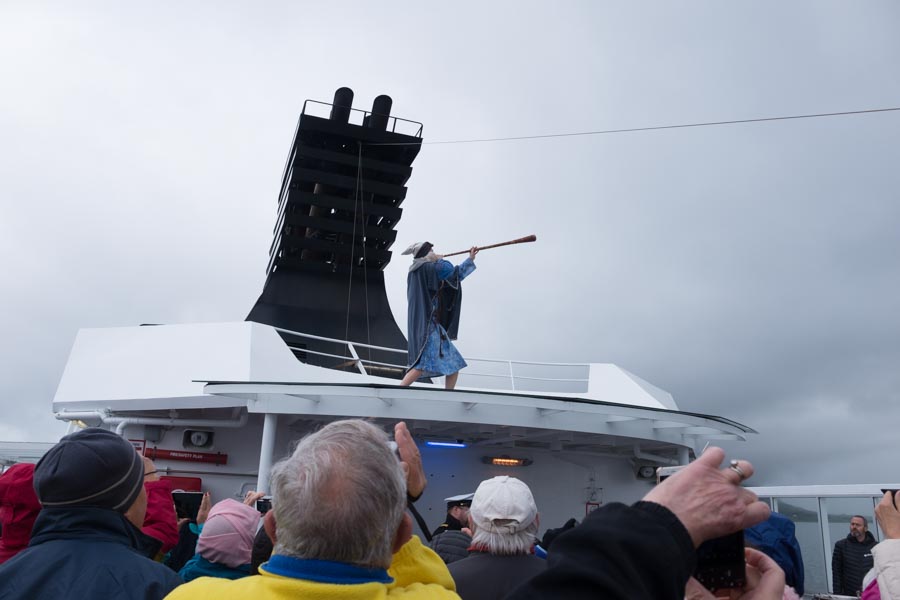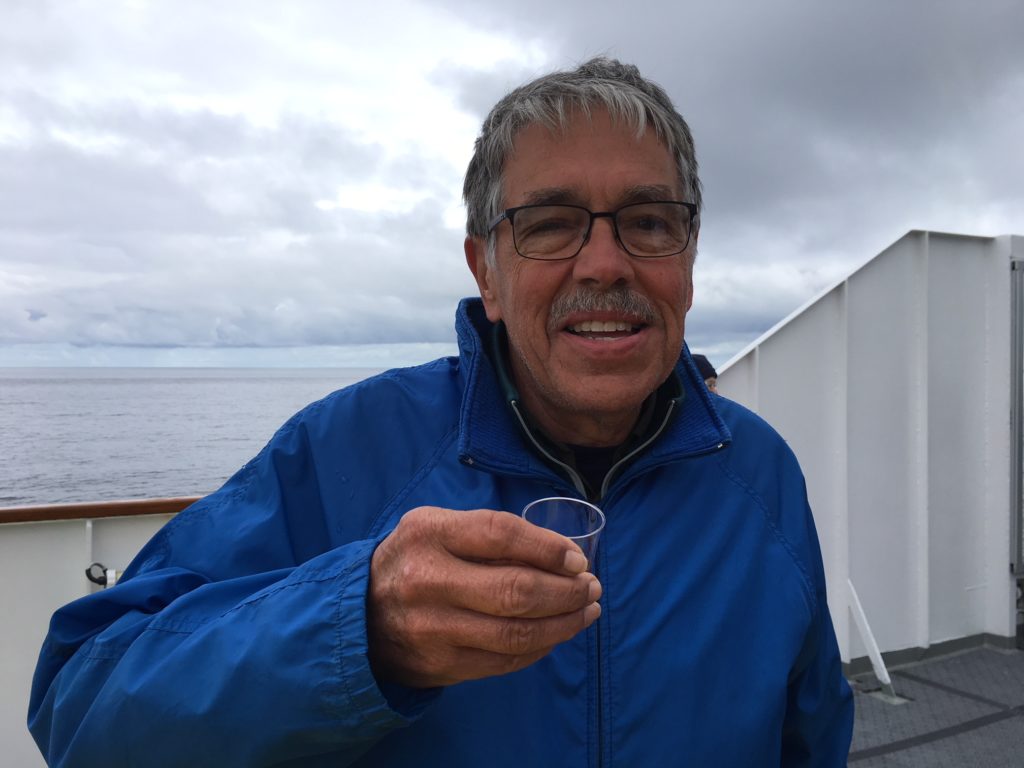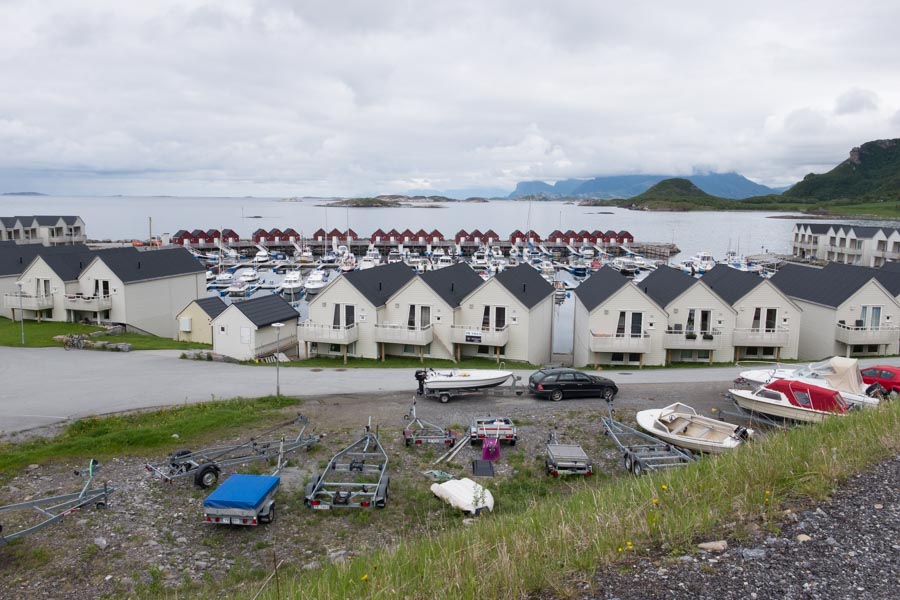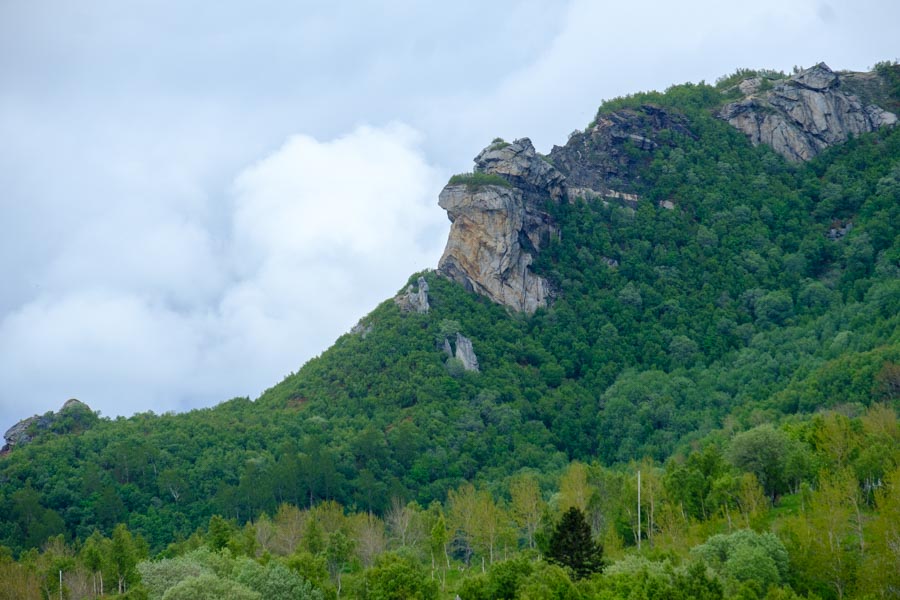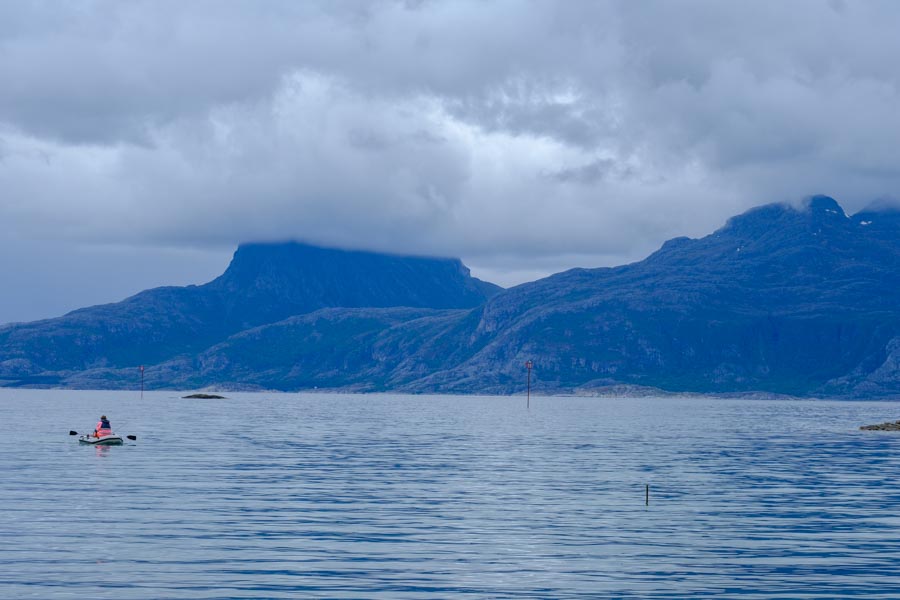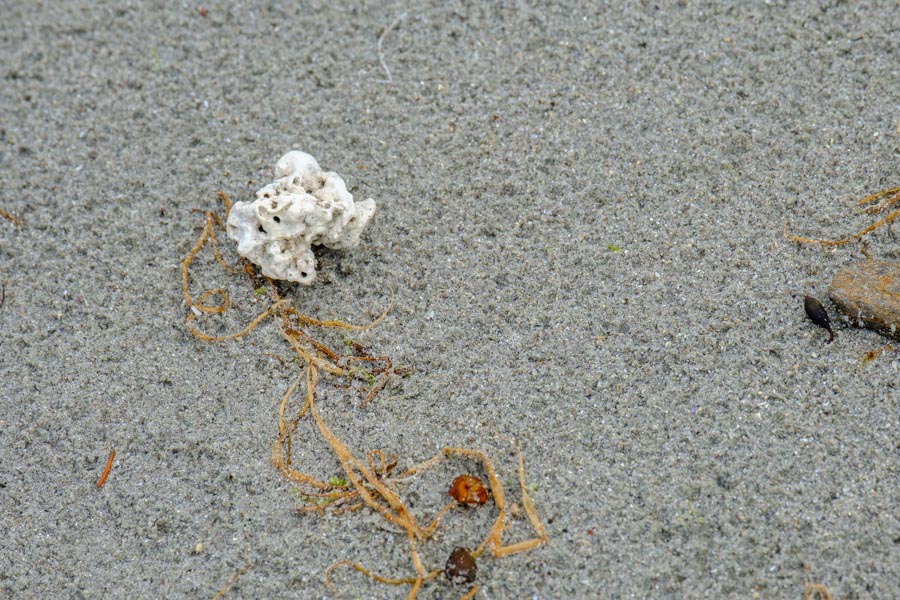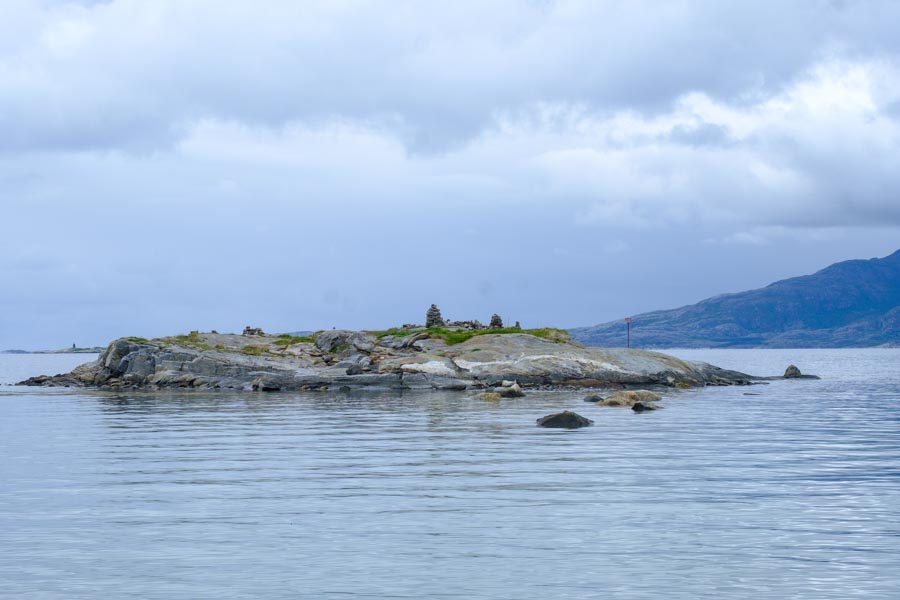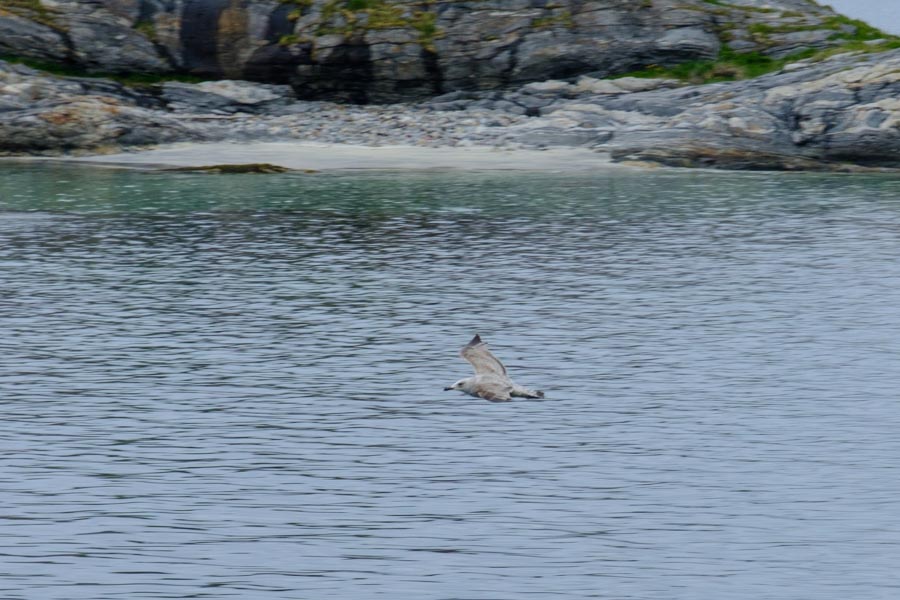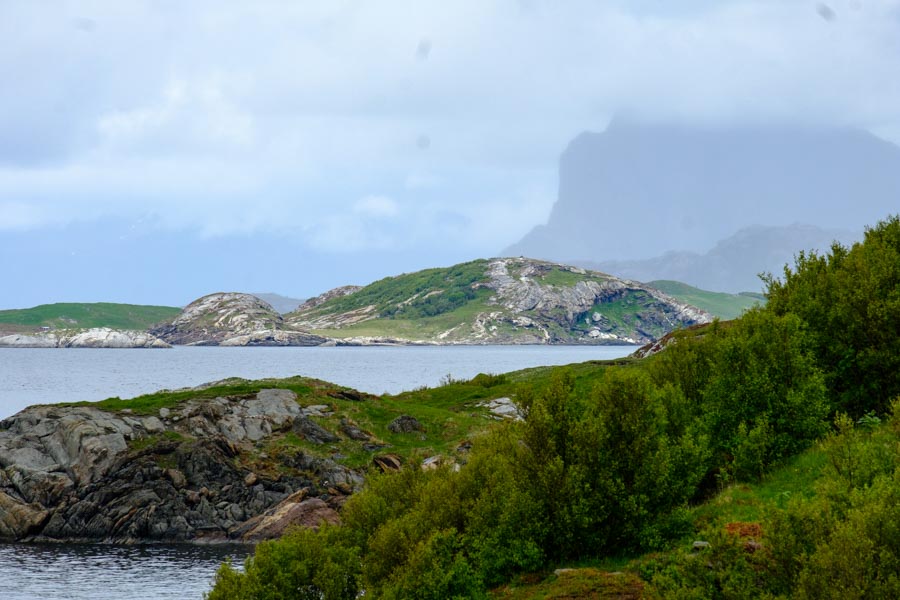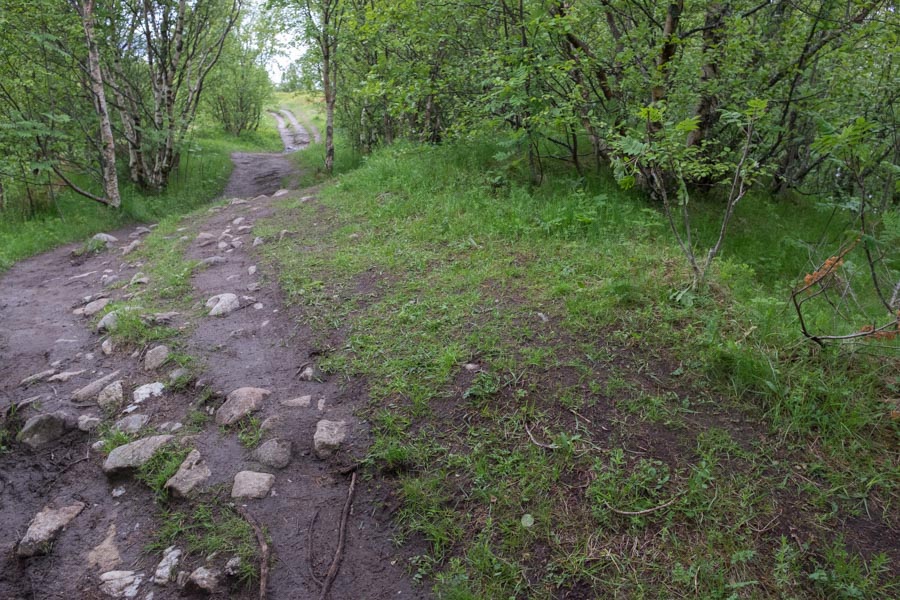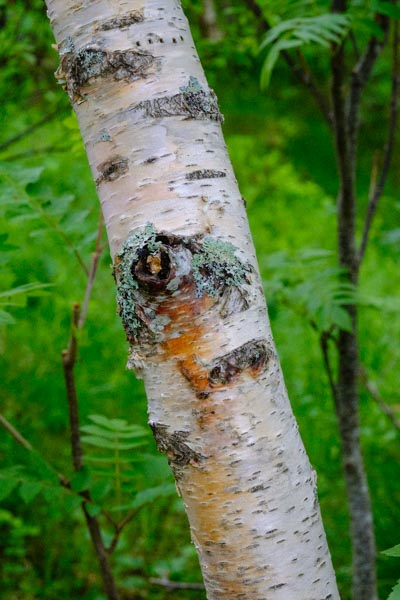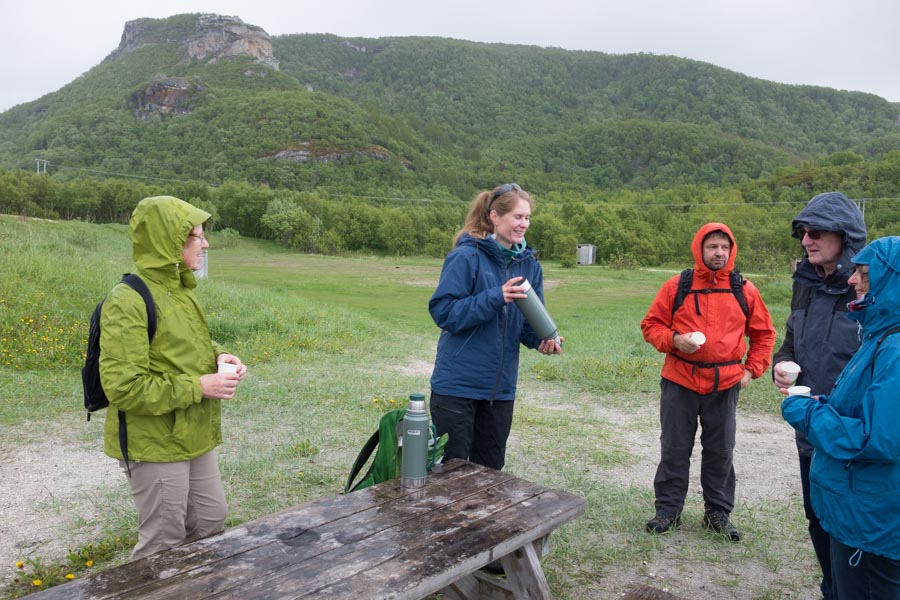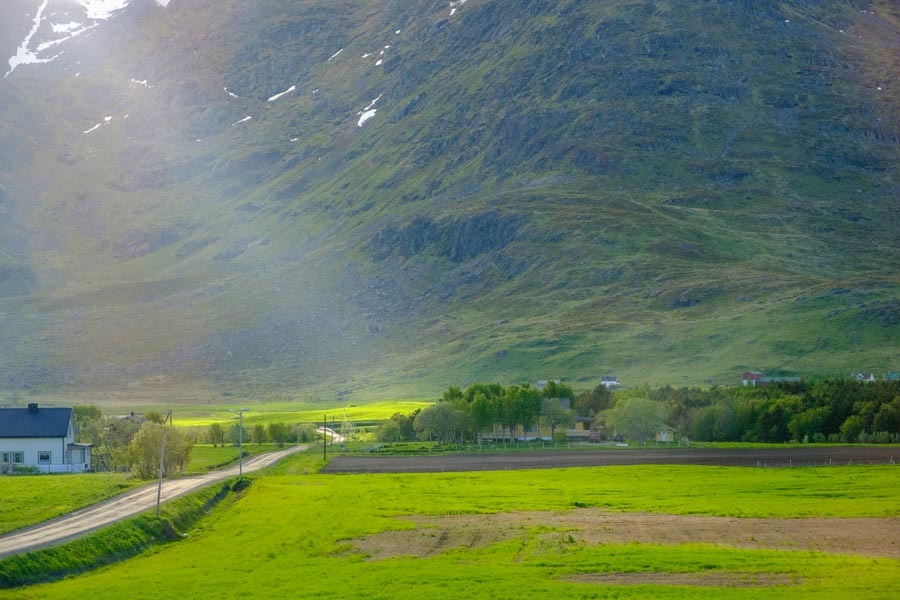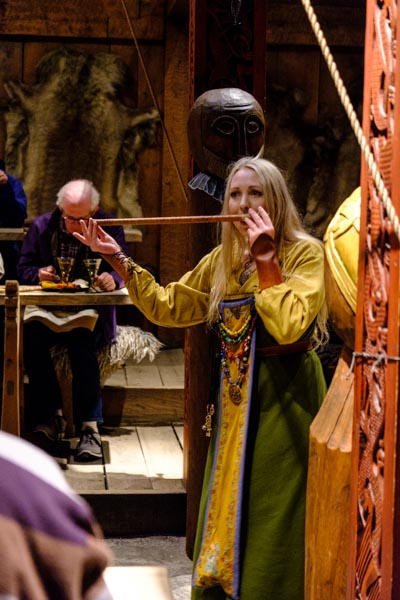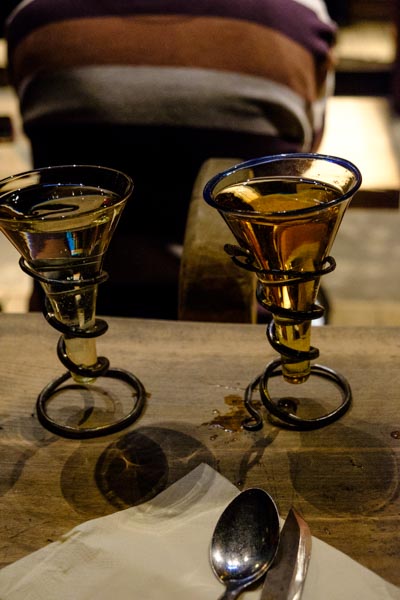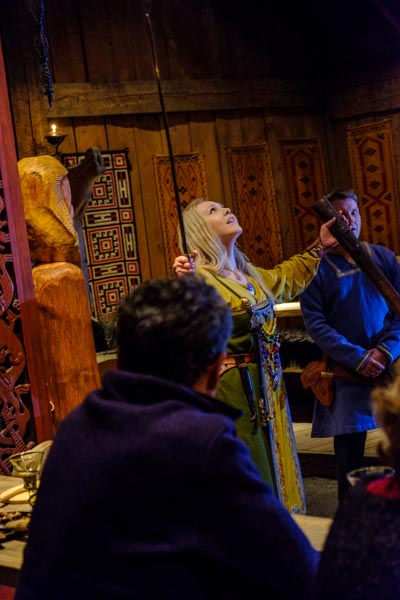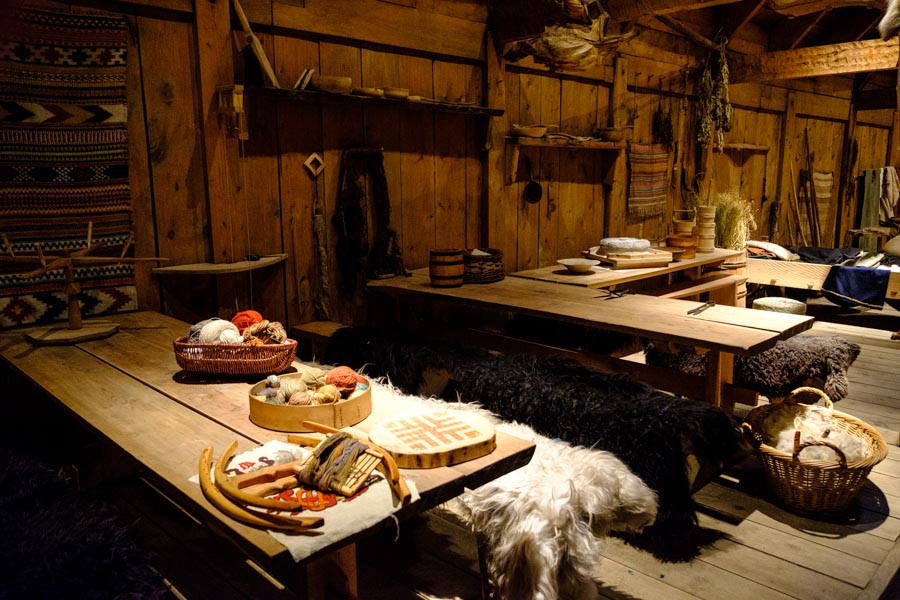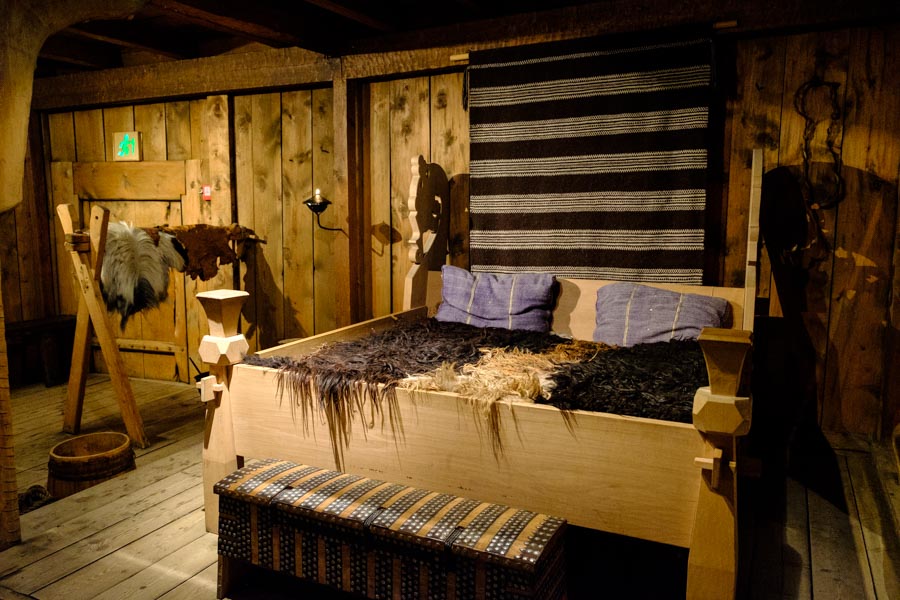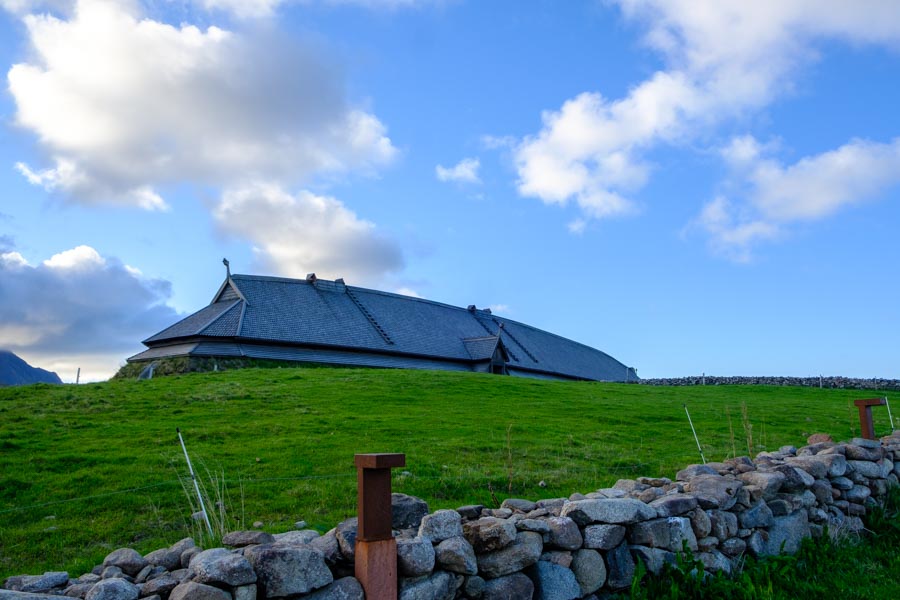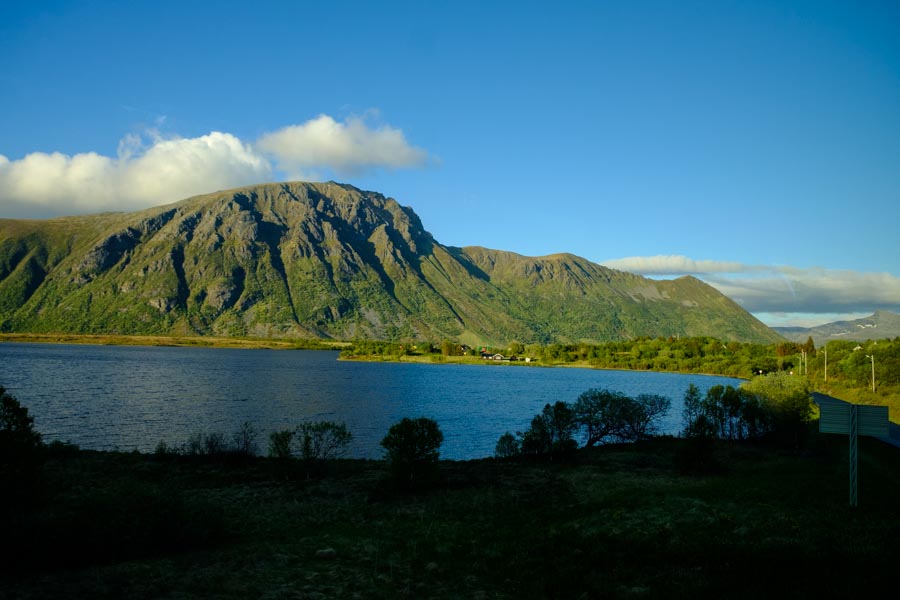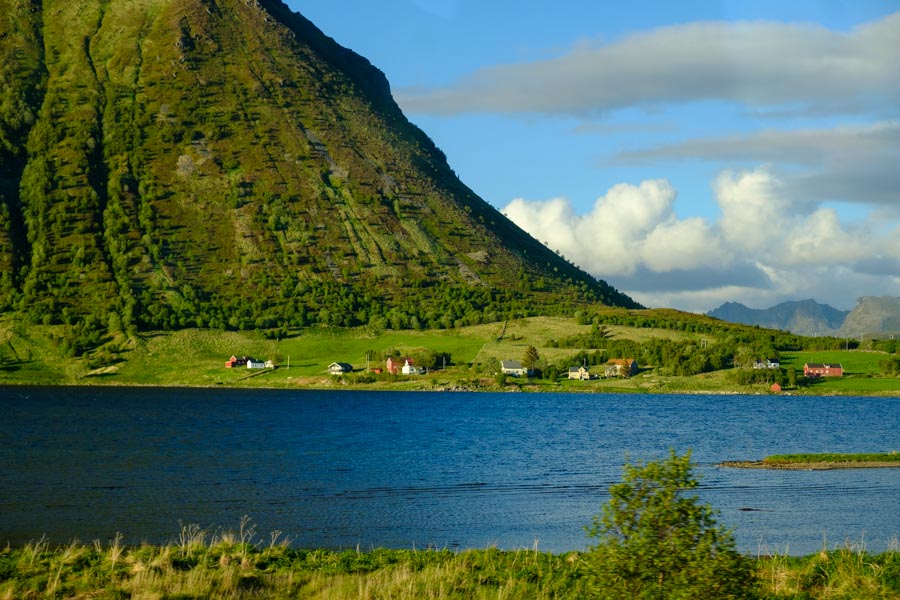Well, we did it – we crossed the Arctic Circle! We’re now officially in the land of the Midnight Sun. We won’t be seeing true darkness until we fly back to Oslo on Friday (and since we’ll arrive in Oslo after sunset we’ll have to wait ‘til Saturday). We crossed the line at 7:09 AM this morning with a brief ceremony on the top deck – outside in 40 degree and cloudy weather. The spot is marked by a post on a small island and the captain blew the ship’s horn as we passed.
Later on the ship’s company held a ceremony to mark the crossing. A Norse god of some sort (I didn’t catch his name) appeared on deck and held an initiation rite in which passengers had water poured down their backs’ and were rewarded with a shot of sweet-tasting mead. I never figured out what benefits, beyond the mead, the initiation would bring but I did it anyway just to be safe and to get my first-ever taste of mead.
The waters through which we are passing are marked by low outcroppings of granite with higher mountains in the background. Temperature in the 40s again today with clouds and occasional rain, although the clouds dissipated late in the afternoon with a freshening breeze.
Bodo, whose last letter is an o with a slanted line through it and is pronounce something like Buddha but that’s not exactly right. These Scandinavian languages, while closely related to German, have some strange symbols with even stranger sounds. Most of these letters are variations you make if you take a bite of oatmeal that’s too hot.
We stopped at Bodo for a couple of hours, long enough to go on a two-hour Arctic Coastal Walk with a guide, a nice lady with three kids ages 10, 11 and 16. Much of the walk was along beaches made white with ground up coral shells. A cold water coral reef is located some distance off shore. We also walked up a small hill to the top where a mound with stones scattered around it marked a Viking grave, probably for a rich man, judging by its size and closeness to the North Sea. The beaches are popular recreational spots; at the start of the walk there was a community of summerhouses, recreational vehicles and a large marina of pleasure craft. It rained a little bit at the end but our guide served us a hot mint tea that took the edge off the cold.
She gave us one interesting fact: this part of Norway claims the greatest amount of daylight of any inhabited part of the world. Yes, the sun never rises in the wintertime but it’s close enough to the horizon that there is always twilight. And of course in the summertime it’s full of daylight all the time.
This area is also quite moderate in temperature. It seldom drops below freezing in the winter and Bodo has little snow. Snow and skiing are possible ten minutes away from the sea and at higher elevations. Highs in the summer time don’t get much above 60. Thanks go to the Gulf Stream that brings warm waters to the North Sea.
People came here at the end of the last ice age, probably from the south. They inhabited land to the north and east of here, an area that disappeared under water as the glaciers melted. Coming inland to the area of today’s Bodo they found animals unfamiliar with humans and so easy prey. As the animals got smarter and the ice melted people moved north to find easier pickings than the now smart game.
Today, people tend to live wherever there is enough flat land to raise grass and hay for animals. These farms are frequently tucked between the seashore and the mountains looming behind. People travel by boat to the mainland and maintain summer cabins in downtown Bodo when they want to get away from it all.
A farmer on the island of Vestvågøy in the Lofoten archipelago, north and east of Bodo, was plowing his fields back in 1981 and uncovered some shards of glass. Further investigation found other artifacts. Experts were consulted and the items judged to be from the Viking era, as early as 700 AD. A six-year archeological dig discovered the remains of a structure more than 200 feet long – the home of a powerful Viking chieftain, probably from 900 AD or so. The house is the largest found so far in Norway.
What was the poor farmer to do? Build a replica, add a modern gift shop building and open the doors to cruise boat passengers like us. The boat dropped us off at Stamsund on the southwest end of the island for a 30 minute bus ride to the Viking Museum. Afterward we bused on to Svolvaer where we met the Nordkapp.
Have you ever been to one of those western cowboy dinner deals in Colorado or somewhere west? Dinner plus some corny acting, singing and dancing? We’ve done that in a lot of venues, from Merry Old England (at Disney World, I think), A Zulu tribal experience in South Africa and a Maori show in New Zealand to name a few that come to mind.
The dinner in this case was great: lamb, carrots, turnips, orzo or something similar, lingberries and all the trimmings. The music was nice: the Viking lady of the house sang and played presumably authentic instruments. I’ll bet the actual songs are mere guesses since they hadn’t even invented 8-track tape back in the Iron Age. Everyone danced: two steps left, one step right. The acting? The kids tried hard but the lines were lame and the comedic timing wasn’t there. And then the gift shop. Those Vikings still know how to plunder their poor unsuspecting victims. Every so often someone would shout, “skoal” and we’d all have to down a gulp of the honey-based mead drink, just like the Vikings used to do. That eased the pain considerably.
The drive was a big part of the trip with beautiful slanting sunlight and interesting fishing villages along the way. The Lofoten archipeliago is the prime location for Norway’s cod industry. From the beginning of human habitation cod fishing has been a way of life. It turns out that the waters in these parts from January to April have the right temperature and salinity to promote successful spawning by the cod.
Cod taken here has traditionally been dried into a form that can be easily shipped and used for up to 10 years. We visited the Hanseatic trading operation in Bergen when we first arrived in Norway. The Germans would sail north, bring back the dried cod to Bergen and then trade it for grain and other items from south of the Baltic. Folks there reconstituted it by soaking the dried carcasses in water for a few days. That solved the problem of what a good Catholic should eat on meatless Fridays.
We’re passing through a “can’t miss” fjord around 11:30 so we’ll be up for that. But we don’t get off the ship until 2:30 tomorrow afternoon so we can sleep in.
Update: The fjord was amazing – I’d be nervous taking our pontoon boat the Margaret B up that crazy passageway. The pictures will have to wait until tomorrow: Judy made me go in the hot tub for a midnight dip. This midnight sun thing is not just tourism hype: it’s real.

